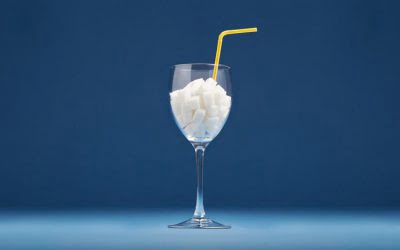Alcohol Facts and Statistics National Institute on Alcohol Abuse and Alcoholism NIAAA
This approach is particularly effective for individuals who may feel ambivalent or uncertain about changing their behavior or quitting alcohol. Patients with AUDs may report additional symptoms, including frequent falls, blackout spells, instability, or visual impairment. They may also report experiencing seizures, tremors, confusion, emotional disorders, and a pattern of frequently changing jobs following a few days of abstinence from alcohol.

Deviance proneness theory proposes that individuals with a history of deviant behavior or inadequate socialization during childhood may be more prone to developing an AUD. In this theory, alcohol consumption can become a strategy for self-medication to alleviate symptoms of depression, anxiety, or feelings of worthlessness. Many people may believe the myth that loading up on bread, heavy foods, or even drinking coffee will lower your blood alcohol level. The truth is that time passing is the only way for alcohol to wear off. Alcohol use disorder is a complex medical condition affecting the brain. It involves an inability to control your alcohol consumption, regardless of its negative effect on your life or health.
Myths and Facts About Alcohol Use Disorder
AUDs have no therapeutic benefits and pose significant disruptions in families and relationships. By providing appropriate interventions, support, and education, clinicians can actively contribute to the well-being and recovery of individuals affected by AUDs. On a global scale, AUDs impact a significant number of people, with an estimated 240 million individuals being affected worldwide, notably in regions such as Europe and the Americas. However, a review of studies published from 2013 to 2019 suggests that people with lower socioeconomic status may be more likely to die from alcohol use disorder. You don’t necessarily need to be drunk for alcohol to affect your decision making abilities. And when your ability to make decisions is impaired, you’re no longer in control.

Society is also seeing alcohol abstinence as more of a positive lifestyle choice, offering up an increasing number of sober party venues and events. And more people are incorporating fun, non-alcoholic options into their work and family celebrations, such as mocktails, specialty sodas, hot chocolate, and other booze-less drinks. In 2019, approximately 20.4 million Americans aged 12 and older struggled with substance use disorder. It has many contributing factors such as genetics, peer pressure, emotional distress, environmental stress, anxiety, and depression. It’s important to know the facts about substance use disorder so that we can work to eliminate the stigma around it and empower individuals to seek treatment. Medications can make detoxification safe while avoiding the worst symptoms of withdrawal.
Myth: It’s OK to get drunk every once in a while.
Most of the health benefits of red wine can be gained from other food sources, while alcohol, no matter the situation, is toxic to your body. Too much alcohol affects your speech, muscle coordination and vital centers of your brain. A heavy drinking binge may even cause a life-threatening coma or death. This is of particular concern when you’re taking certain medications that also depress the brain’s function. Discover how many people with alcohol use disorder in the United States receive treatment across age groups and demographics. Explore how many people ages 18 to 25 engage in alcohol misuse in the United States and the impact it has.
- Clinicians should encourage patients to attend AA meetings and consider involving their family members in recovery.
- Aside from physical altercations, a single heavy night of drinking can strain or even injure your internal organs—including your stomach, liver, and kidneys.
- This means that when people with the disorder are abstaining from alcohol, they are still at increased risk of resuming unhealthy alcohol consumption, even if years have passed since their last drink.
- A prescription drug is a pharmaceutical drug that is permitted to be dispensed only to those with a medical prescription.
- Many people believe recreational drug and alcohol use, i.e., from time to time, isn’t harmful.
- Because denial is common, you may feel like you don’t have a problem with drinking.
There is no cure for alcohol use disorder, and most people never recover. Chances are that you will never live a normal life again or be able to regain those close relationships you have lost as a consequence of your addiction. Nearly 30 million Americans aged 12 and older qualified as having an alcohol use disorder (AUD) within the past year of being surveyed in 2021, according to the National Survey on Drug Use and Health (NSDUH).
Alcohol use disorder
It affects more than 14 million adults in the U.S — about 1 out of every 18 people in this age group. Census Bureau’s monthly retail sales survey, December sales at such retailers were 37% above the average for the other 11 months of the year. Conversely, January and February are typically the slowest months for those sellers. They may use drugs or alcohol to cope with stress, anxiety, or other underlying emotional issues. However, this is a very limiting and harmful belief that can prevent people from seeking help and pursuing a healthier life. Many believe if the affected person had enough willpower, they could resist the temptation to use substances and quit their addictive behavior.
- These factors include the home environment, peer interactions, genetic predisposition, cognitive functioning, and the presence of certain personality disorders.
- Alcohol use disorder (AUD) remains a significant issue in the United States, affecting many individuals.
- Caffeine will make you feel more “alert.” But you’re only going to be a more alert drunk person.
- Ultimately, there is no safe situation in which to get drunk without making yourself vulnerable to negative consequences, including addiction, either in the short- or long-term.
- Although the exact cause of AUD is not fully understood, several factors are believed to contribute to its development.
- Over time, these changes can lead to long-term health complications if you’re drinking too much.
- Moreover, genetic predisposition, mental health conditions, environmental influences, and social factors can also contribute to developing opioid addiction in individuals with no history of drug abuse.
And if you have a family history of addiction or underlying health issues, you are doubly susceptible to substance misuse. Ultimately, there is no safe situation in which to get drunk without making yourself vulnerable to negative consequences, including addiction, either in the short- or long-term. Yale Medicine’s approach to alcohol use disorder is evidence-based, integrated, and individualized. Our specialists utilize a range of medication and behavioral methods with demonstrated efficacy for helping individuals change their drinking habits and maintain these changes long-term. Care is integrated with patients’ other health care to improve treatment access, reduce costs, and promote better physical and mental health outcomes. Like many other substance use disorders, alcohol use disorder is a chronic and sometimes relapsing condition that reflects changes in the brain.
Myth: People with alcohol use disorder usually have fewer life resources
They may use alcohol to enhance positive emotions or social experiences. Multiple theories have been proposed to explain the development of AUDs in individuals. Some evidence-supported theories include positive-effect regulation, negative-effect regulation, pharmacological vulnerability, and deviance proneness. To learn more about alcohol treatment options and search for quality care near you, please visit the NIAAA Alcohol Treatment Navigator. However, there’s limited research showing the efficacy of this form of treatment. Evidence also shows that continuing to drink in moderation while in recovery may heighten your cravings for alcohol.
- Alcohol use disorder is a medical condition that cannot be overcome with willpower alone.
- Many believe if the affected person had enough willpower, they could resist the temptation to use substances and quit their addictive behavior.
- And more people are incorporating fun, non-alcoholic options into their work and family celebrations, such as mocktails, specialty sodas, hot chocolate, and other booze-less drinks.
- In most of the United States, your blood alcohol content (BAC) must be under 0.08% for you to legally drive.
- A 2015 study involving 561 students found that children who drank alcohol before sixth grade were more likely to abuse alcohol when they reached ninth grade.
- Medications can make detoxification safe while avoiding the worst symptoms of withdrawal.
Learn how many people ages 12 to 20 engage in underage alcohol misuse in the United States and the impact it has. Find up-to-date statistics on lifetime drinking, past-year drinking, past-month drinking, binge drinking, heavy alcohol https://ecosoberhouse.com/recovery-residence/ use, and high-intensity drinking. Motivational interviewing is a counseling approach that aims to assist individuals in recognizing and addressing their current problems and encourages them to make positive changes in their behavior.
If you feel that you sometimes drink too much alcohol, or your drinking is causing problems, or if your family is concerned about your drinking, talk with your health care provider. Other ways to get help include talking with a mental health professional or seeking help from a support group such as Alcoholics Anonymous or a similar type of self-help group. Unhealthy alcohol use includes any alcohol use that puts your health or safety at risk or causes other alcohol-related problems. It also includes binge drinking — a pattern of drinking where a male has five or more drinks within two hours or a female has at least four drinks within two hours. It is uncommon for individuals with AUDs to seek help on their own proactively. Most alcoholics never receive necessary medical attention due to a lack of screening by healthcare providers.
This phenomenon, known as tolerance, can increase the risk of addiction. For example, fentanyl, a potent opioid prescribed for severe pain after surgery or injuries, can also cause euphoria, tempting some people to misuse it recreationally. This misuse can quickly lead myths about alcoholism to addiction, making it hard for patients to quit use even when it harms their health. Substance use disorders are chronic and relapsing conditions that involve significant changes in brain chemistry, rewiring the brain’s reward system and decision-making processes.

